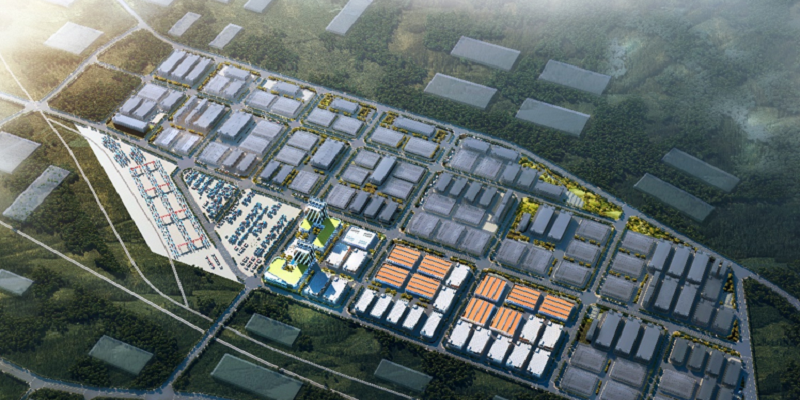MCDF Financed Procurement to Support the Preparation of the Proposed AIIB Financed China-ASEAN Sea-Rail Multimodal Logistics Project – Climate Assessment and Green and Smart Logistics Park Planning and Design Executing Agency:People’s Government of Qinbei District, Qinzhou, Guangxi Zhuang Autonomous Region, China
source:本站 Number of views:73 time

Project Type:
Project location: People’s Government of Qinbei District, Qinzhou, Guangxi Zhuang Autonomous Region, China
Project Duration: 2022-2030
Client: Asian Infrastructure Investment Bank
Project Highlights:
√ Green Certification Benchmark: The first LEED-certified multimodal logistics hub in Guangxi Zhuang Autonomous Region (GZAR), realizing low-carbon and smart operations.
√ Ecological Resilience Model: China’s first “Ecological Resilience-Oriented Smart Logistics Park Demonstration Project,” ensuring stable operations and sustainable development under extreme climate conditions.
√ Five-Dimensional Multimodal Hub: First “Land-Sea-Air-Rail-River Five-Dimensional Smart Multimodal Hub” in GZAR, setting a new benchmark in digital, low-carbon, and international modern logistics targeting ASEAN.
Project Contents:
Subproject 1 – Climate Mitigation (Carbon Reduction) Assessment:
Adopt international climate accounting frameworks to define baseline and account baseline emissions; calculate emission reductions based on green and smart mitigation measures; analyze alignment with the Paris Agreement and estimate climate mitigation financing.
Subproject 2 – Climate Adaptation Assessment (Climate Risk Assessment or CRA):
Assess climate risks from the dimensions of sensitivity, exposure, and vulnerability to inform subsequent adaptive design; analyze consistency with the Paris Agreement and estimate climate adaptation financing.
Subproject 3 – Benchmark Study on Green and Smart Logistics Parks:
Analyze domestic and international development practices of green and smart logistics parks, summarize best practices, and design and implement a field survey plan, culminating in field study and benchmarking report.
Subproject 4 – Planning and Design for Green and Resilient Logistics Parks:
Develop design guidelines for park and building-level optimization; integrate multi-task outcomes to provide technical solutions and cost estimates, supporting the project in obtaining green and resilient certifications.
Subproject 5 – Smart Logistics Park Planning and Design:
Investigate local industries and location advantages; conduct needs and status analysis; study upper-level plans to identify key industries in the park; carry out planning and design optimization.
Subproject 6 – Knowledge Sharing:
Formulate and update the capacity building and knowledge sharing plan; conduct training and knowledge dissemination activities; regularly organize online seminars to share the latest research findings and project progress. Collect feedback and evaluate the effectiveness of these activities for continuous improvement.
Subproject 7 – Embedding Green, Resilient, and Smart Themes in Preliminary Design:
Focus on key areas of design and introduce multi-dimensional approaches; provide phased expert guidance throughout the full project lifecycle; establish a methodological framework applicable to green, resilient, and smart design of logistics and warehousing projects.
Services Provided by Energy and Environmental Development Research Center (EED):
As the consortium lead, EED will integrate professional resources to provide full-process consulting support for successful project implementation:
Climate Action and Assessment: Conduct carbon reduction and climate adaptation assessments, calculate baseline emissions and reduction potentials, assess climate risks, ensure alignment with the Paris Agreement, and estimate required financial support.
Green and Smart Park Planning and Design: Research domestic and overseas best practices; develop planning and design guidelines for green, resilient, and smart logistics parks; optimize technical schemes and cost estimation to support international certification.
Smart and Industrial Synergy Development: Based on location advantages and industrial needs, carry out planning for the smart logistics park; optimize functional layouts; promote digital and low-carbon operations to enhance regional competitiveness as a logistics hub.
Capacity Building and Continuous Improvement: Disseminate project outcomes through knowledge sharing, training, and workshops; establish full-lifecycle design methodologies to ensure green, resilient, and smart concepts are integrated across all project stages.
 English
English Chinese
Chinese